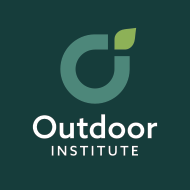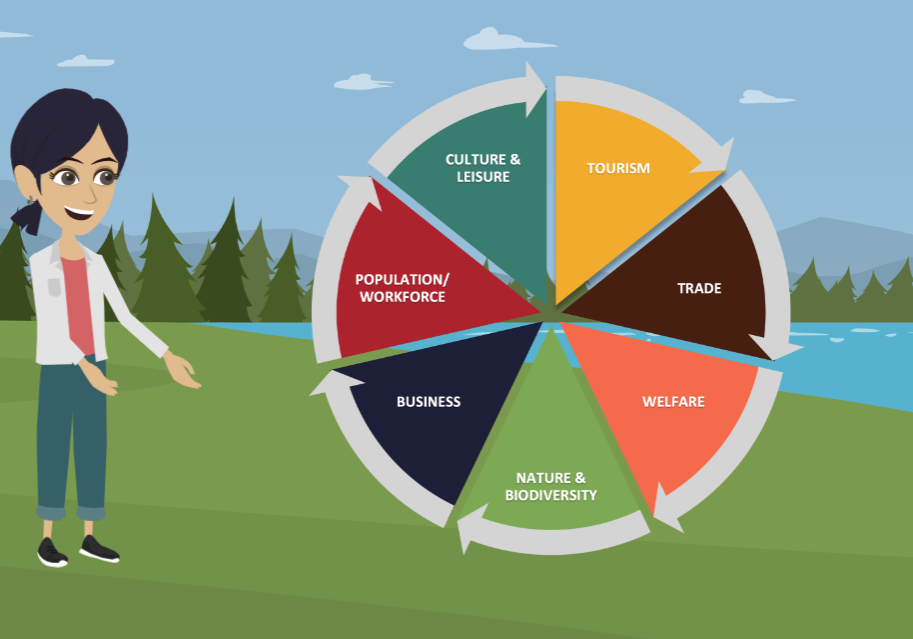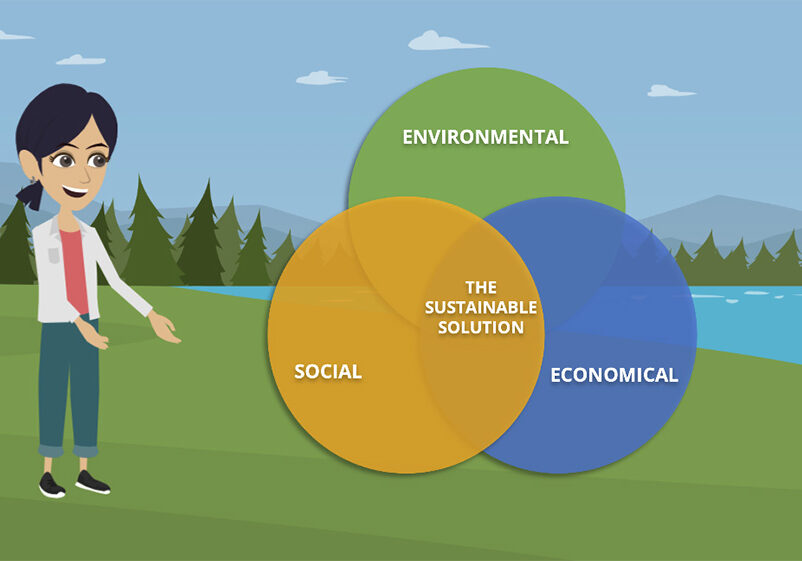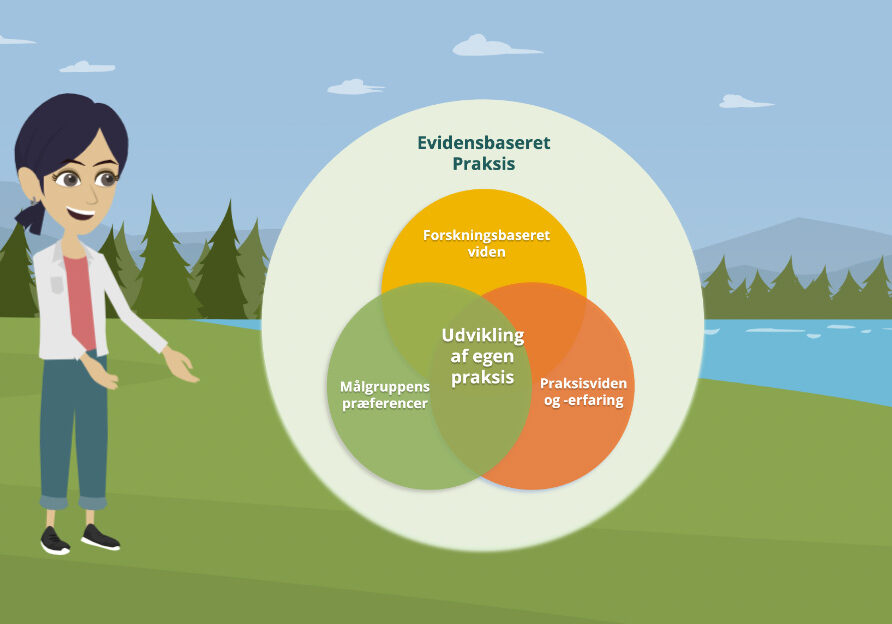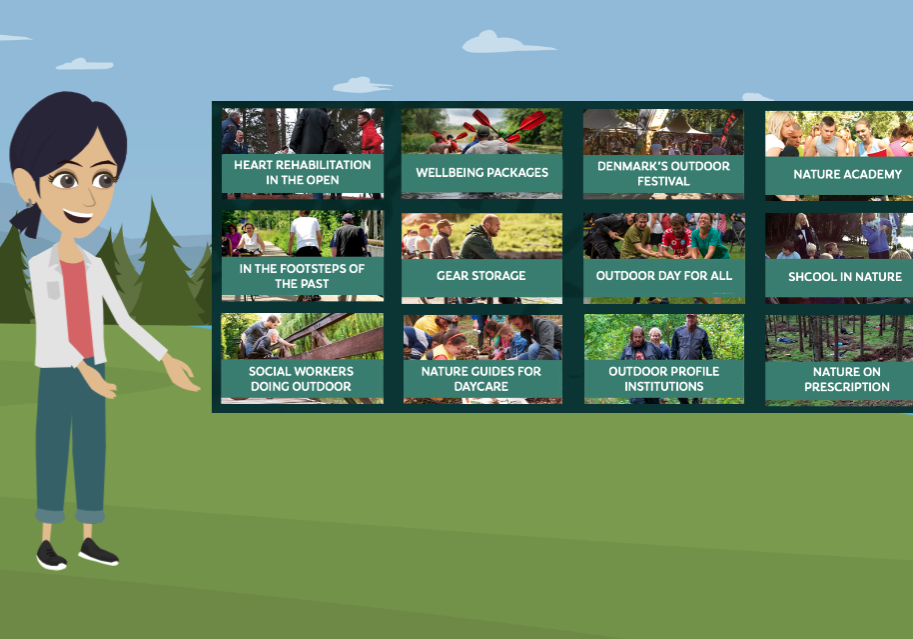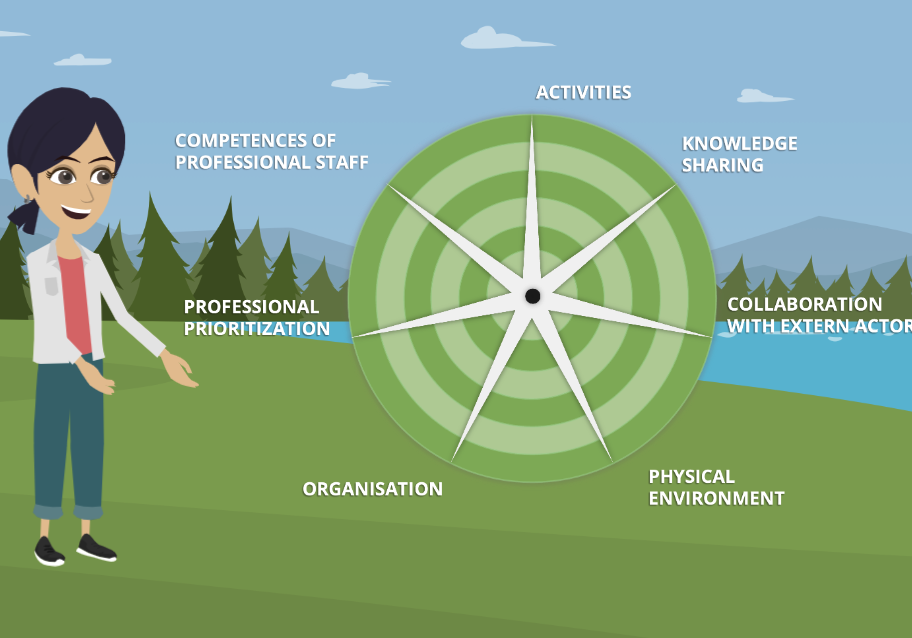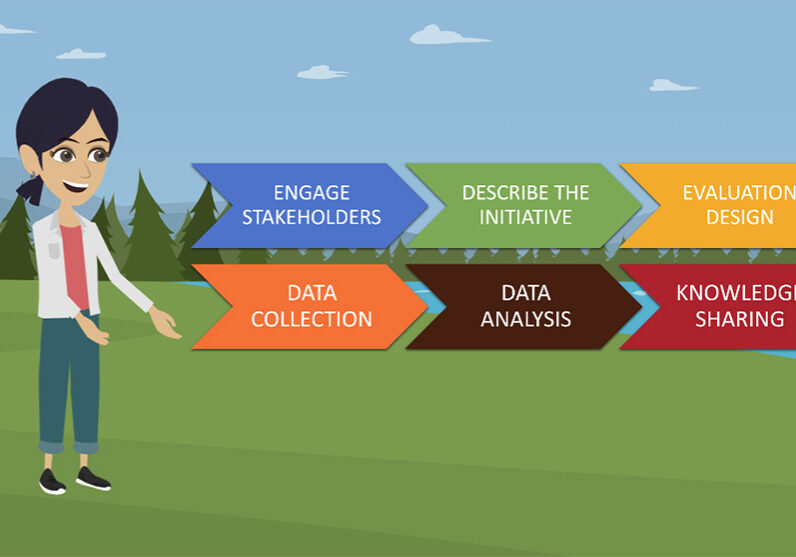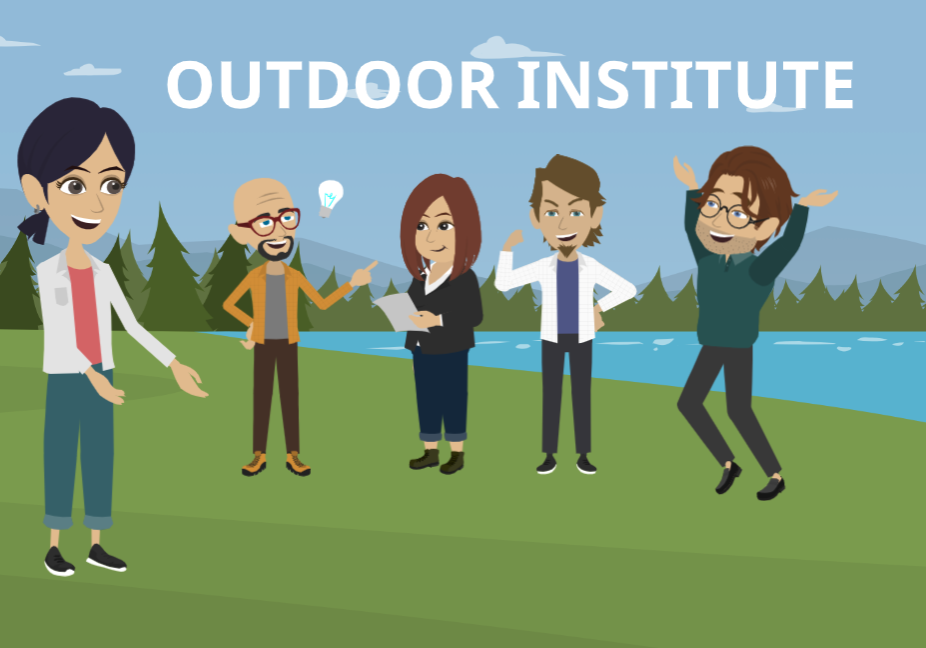Access for all! - Development of gear bank for citizens with special needs
Outdoor space should be accessible to all in Denmark's Outdoor Capital, but for citizens with special needs, there are a number of barriers that limit the opportunities to use outdoor space and nature.
One specific barrier is the lack of gear! The Outdoor Institute, in collaboration with Silkeborg Municipality, has thus focused on the development of a gear bank that can be used across institutions and associations. In 2022 efforts will be made on establishing a pilot project to test possible gear bank models.
Opportunities and barriers for people with disabilities
6 out of 10 people with disabilities would like to make more use of outdoor activities - and more than 80% find that outdoor activities improve their mental well-being and mood! But at the same time, people with disabilities are a group of the population who experience a number of barriers when participating in outdoor activities or getting out into nature.
In the report Sundhedsfremmende natur for mennesker med bevægelseshandicap ( Københavns Universitet 2017)(Health-promoting nature for people with mobility impairments - University of Copenhagen 2017) shows that 30.6% of citizens with mobility impairments rarely or never visit outdoor areas.
The corresponding figure for the general population is 6.9%! Dvs. at mange mennesker med handicap bliver ufrivillige inde-mennesker, fordi naturen ikke er tilgængelig for dem.
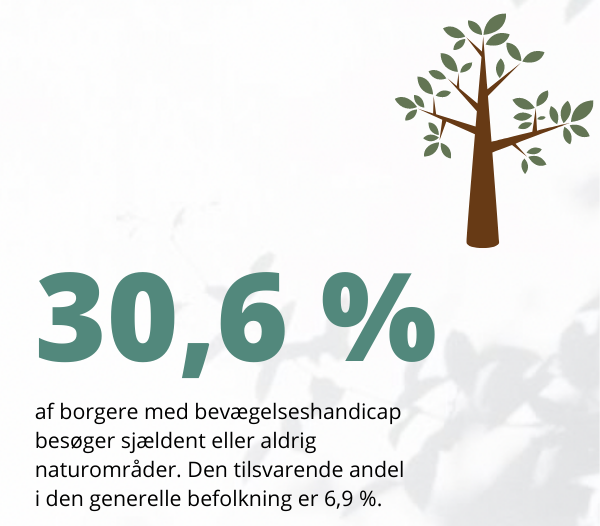
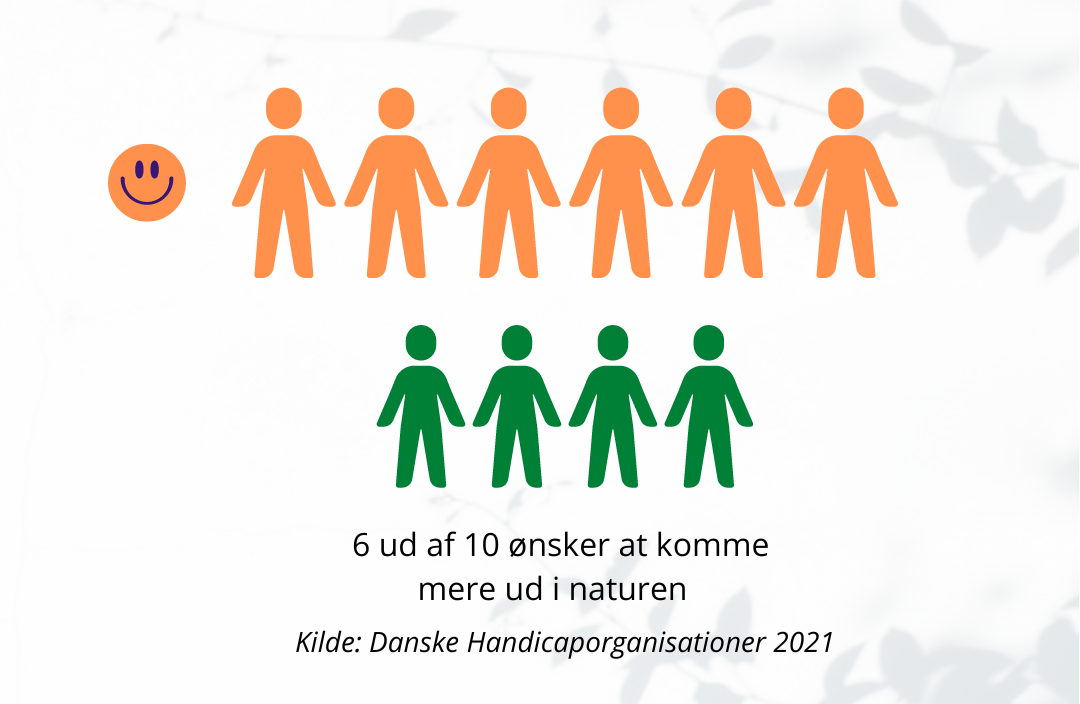
Lack of a physical environment, such as access and equipment, and lack of accompanying persons are two of the main barriers to outdoor recreation. (Danske Handicaporganisationer v/ Moos-Bjerre 2021)
Of physical barriers to more outdoor activity, 20% indicated that they cannot get around the place where they are outdoor active. Examples include stairs or poor surfaces, hills or barriers. In addition, 15% answered that access conditions are poor at the outdoor place where they are active.
27% feel that relying on a companion or equivalent to complete their outdoor activity is a barrier.
Overall, 45% responded that they felt practical reasons prevented them from being more active outdoors.
Kilde: Friluftsliv blandt personer med handicap i Danmark Danske Handicaporganisationer (DH) Rapport udarbejdet af Moos-Bjerre A/S i 2021(Outdoor activities among people with disabilities in Denmark Danish Disability Organisations (DH) Report prepared by Moos-Bjerre A/S in 2021)
Needs analysis and mapping of equipment in Silkeborg Municipality
In March 2022, the Outdoor Institute conducted a needs analysis in the municipality of Silkeborg. The analysis, which was based on a questionnaire survey among relevant managers and coordinators in the municipality, also asked about existing equipment and the use of equipment in the municipality's institutions.
Among other things, the survey showed that the lack of relevant equipment was a barrier to outdoor trips outside the local area in more than 56% of the responses.
However, the structural framework such as nominations, timetables and documentation tasks was ranked highest among a number of possible barriers to more outdoor trips.
There was a clear desire for increased use of outdoor spaces and nature. More than 70% answer 'to some extent, to a great extent or to a very great extent' that they would like to have more opportunities to visit the surroundings or to do more outdoor activities.
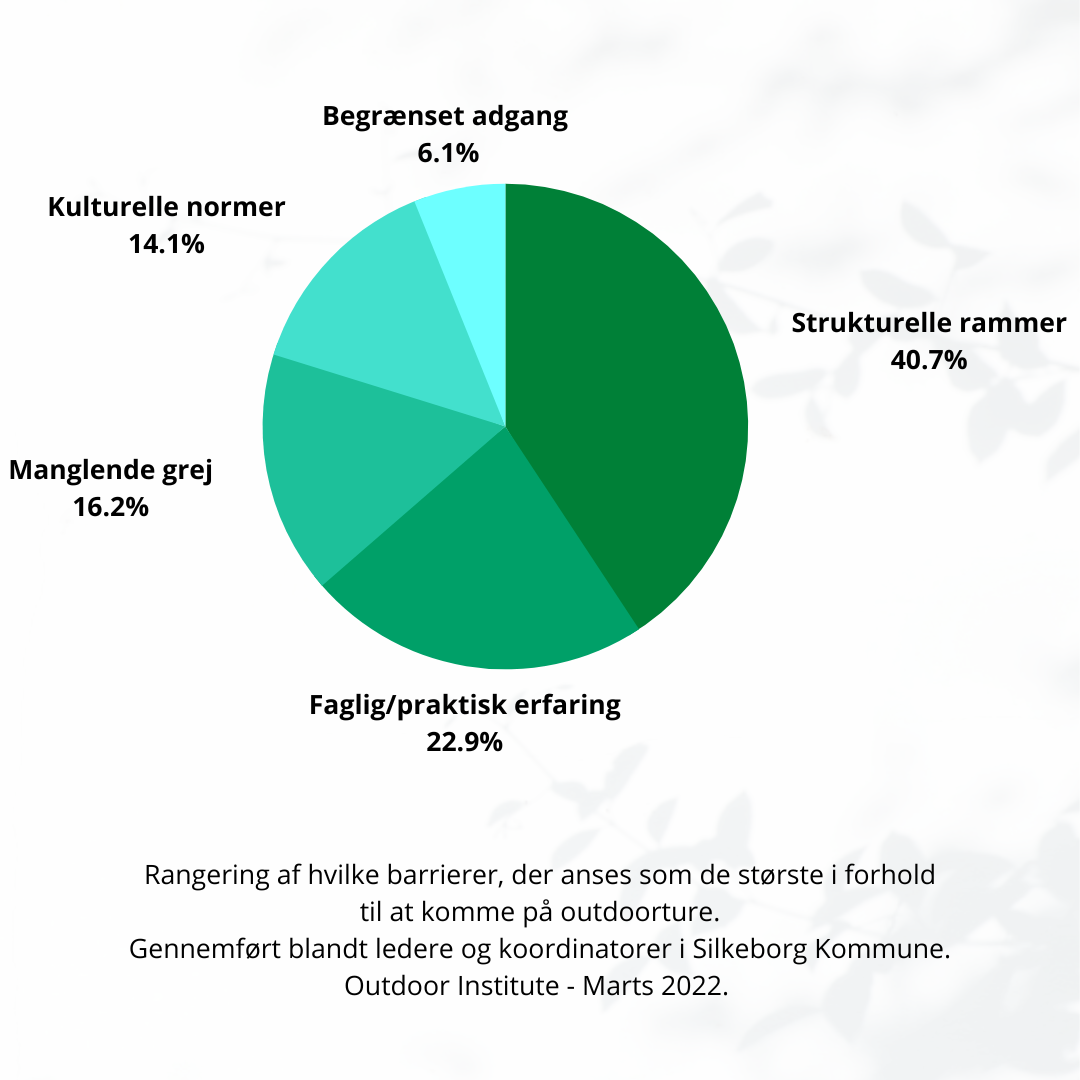
Experience with equipment for people with disabilities
Solutions and offers in Norway and Finland
While people with disabilities living in Denmark have limited opportunities to engage in outdoor activities, our Nordic neighbours have a different situation, supporting citizens with disabilities to access nature and thus maintain an everyday life where the disability is less debilitating.
In the urban area of Beitostølen in Norway, a Wellness Sports Centre for citizens with disabilities was already established in 1970. The centre has a staff of 120 physiotherapists, nurses, sports educators, activity leaders, etc.
Video: presentation of Beistølens Helsesportsenter
The centre focuses on opportunities rather than constraints, with particular emphasis on activities and adapting equipment that people can transfer and use in their own local environment and everyday life.
A similar centre in Finland is also working to give people with disabilities and their families work and learning experience in the outdoor environment. Training includes education, knowledge sharing and testing of various specialised equipment.

Experience with equipment banks in Denmark
In 1995, the first equipment banks were established in Denmark, and in 2016 there were approximately 29 equipment banks spread across the country, of which these primarily cater to schools and institutions.
Andkjær and Sørensen focus in ´Gear Banks in Denmark - Importance for Outdoor Recreation, Development and Future Perspectives´ (2017) on the organisation and future perspectives of gear banks in Denmark. Including people with special needs/disabilities, which they mention as a future target group.
"The equipment bank managers ask for training in the guidance of special equipment, e.g. for disabled people. This includes how to up-skill the equipment bank attendants ..."
A gear bank is, as the name suggests, a 'bank' that holds various gear related to outdoor recreation, for example kayaks, tents, boating equipment. But in order to meet users' needs and work in practice, there are a number of requirements that need to be met.
Specifically in relation to disabled people and special equipment, the report points out that lack of training and lack of guidance may be one of a number of challenges that need to be addressed when setting up future solutions.
Would you like to have more information about the initiative - or get in touch with the people behind it?
Write to Outdoor Institute at heiko@outdoorinstitute.dk
Be an Outdoor City!
Experience the Outdoor Capital of Denmark and develop your own city’s approach. We share our knowledge and support you in developing your Outdoor City in a facilitated and collaborative process.
The Outdoor Sustainability Approach
Learn about Silkeborg’s inclusion of sustainability in outdoor initiatives exemplified by Forces of Nature.
Courses for professionals
The Outdoor Institute’s course offerings focus on how you as a professional can use nature as a resource, and how your organization can develop and embed the right content and framework for an outdoor culture.
Development of nature-based initiatives
As a development and knowledge-sharing center, we have extensive experience in developing and implementing nature-based interventions.
The Outdoor Compass
The Outdoor Compass gives you an overview of the key elements in the development of an outdoor culture.
Evaluation of benefits
We conduct both qualitative and quantitative evaluations based on interviews, questionnaires, participant observation, etc.
Professional presentations, lectures and workshops
Knowledge sharing creates development. So please, don’t hesitated to contact us if you need knowledge about benefits of nature, outdoor health initiatives, etc.
